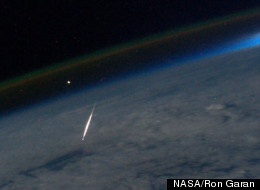Europa Clipper: Water Geysers On Jupiter Moon May Boost Support For Life-Hunting Mission
Space.com | By Mike Wall
Posted: 12/16/2013 9:09 am EST
http://www.huffingtonpost.com
SAN FRANCISCO — The apparent discovery of water geysers on Jupiter’s moon Europa makes the icy body an even more attractive target for a life-hunting mission, researchers say.
Scientists announced Thursday (Dec. 12) that they had detected transient plumes of water vapor erupting from Europa’s south pole and extending about 125 miles (200 kilometers) into space. The ice-covered moon is thought to contain a subsurface ocean of liquid water, and the geysers represent a way to sample this potentially life-supporting environment, NASA officials said.
“Indeed, the plumes are incredibly exciting, if they are there,” Jim Green, head of NASA’s planetary science division, said here Thursday at the at the annual meeting of the American Geophysical Union. “They’re bringing up material from within the ocean; perhaps there’s organic material that will be laying on the surface of the south pole.” [Photos: Europa, Mysterious Icy Moon of Jupiter]
The new find, made using observations by NASA’s Hubble Space Telescope, could build some momentum for a mission concept the space agency is developing called the Europa Clipper.
The Europa Clipper probe would orbit Jupiter but make multiple flybys of the 1,900-mile-wide (3,000 kilometers) moon, using a number of different science instruments to study Europa’s ice shell and subsurface ocean. The strategy would be similar to that employed by NASA’s Cassini mission, which has made flybys of many Saturn moons since entering into orbit around the ringed planet in 2004.
“What we have been doing is studying several approaches to really understand Europa from a spacecraft in that environment, and it looks like the Clipper concept is our best one,” Green said. Continue reading


